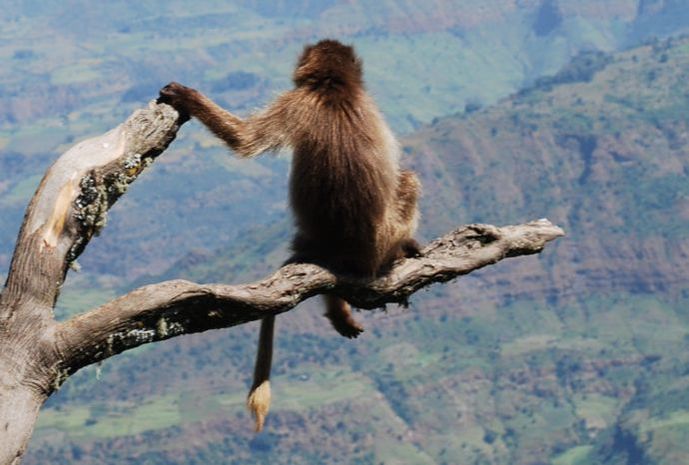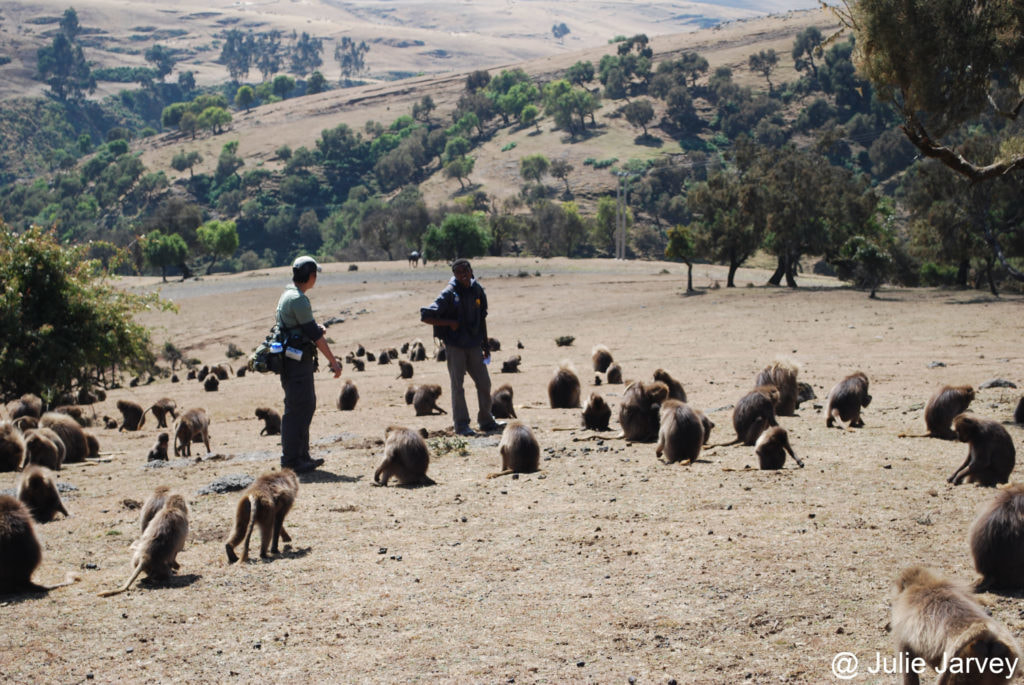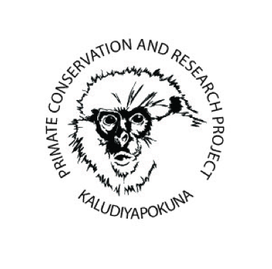Amy currently conducts research at two non-human primate field sites.
Simien Mountains National Park, Ethiopia
|
Amy is an associate co-director of the Simien Mountains Gelada Research Project, located in the Simien Mountains National Park, in Northern Ethiopia. The gelada population in the Simien Mountains was originally studied by Robin Dunbar in the 1970s. In 2005, Drs. Jacinta Beehner and Thore Bergman began the first long-term project in the area, establishing the Simien Mountains Gelada Research Project (formally known as the University of Michigan Gelada Research Project). Since then, the project has ballooned to incorporate 4 co-directors (including Amy), 5 postdocs, and numerous graduate students from the University of Michigan, Stony Brook University, and the University of Washington. Our research project has also accumulated 12 years of long-term data on the demography, behavior, genetics, and physiology on adult and immature geladas.
The Simien Mountains are an amazing place to conduct research. To date, we follow over 21 reproductive units embedded in bands of more than 200 individuals. The monkeys are terrestrial, so it is relatively easy to acquire detailed and accurate data on behavior. Similarly, fecal and urine samples for the analysis of DNA (host, parasite, microbial), hormones, and immune biomarkers are relatively easy to collect. |
|
Despite the relative ease of data collection, conducting research on geladas presents its own set of unique challenges. Following over 200 known individuals (>80 immatures) across 21 social units means that there are simply more faces to learn and recognize. Depending on the experience of the observer and the number of subjects involved in a research project, it may take anywhere from one to several months to learn most of the individuals. Furthermore, although geladas are terrestrial, they live at extremely high altitudes. Our study site is located approximately 11,000 feet above sea level, and the air is very thin, so following monkeys is not as easy as it appears.
Nevertheless, the Simien Mountain geladas have been the subjects of a plethora of past and on-going research projects, ranging from those related to sexual selection and communication, to projects related to reproduction, development, and life history. Amy’s current research on this population focuses on how nursing behavior and the timing of weaning is altered by early life adversity, and how this in turn, shapes offspring growth, gut microbial development, and inflammation. |
Kaludiyapokuna Reserve, Sri Lanka
|
Amy is also co-director of the Kaludiyapokuna Primate Conservation and Research Project. Kaludiyapokuna is a unique forest fragment in which two sympatric Colobines coexist: the highly ‘weedy’ tufted gray langur (Semnopithecus priam) that has successfully colonized anthropogenic habitats across northern and central Sri Lanka, and the endemic purple-faced langur (Semnopithecus vetelus), which is highly endangered and rapidly going extinct. Early feeding ecology studies on both species were conducted by Dr. Rajnish Vandercone in 2008-2009 (University of Rajarata, Sri Lanka). In January 2018, Amy, Rajnish, and Roberta Salmi (University of Georgia) began a long-term study on the two langur species in the area.
|
The forest itself is a 13km2 fragment surrounded by rice fields and tourist areas to the north and west and bordering a man-made lake and the Knuckles Mountain Range to the east and south, respectively. The border to the south is a potential dispersal corridor for both species, but gray langurs have been found in villages and rice fields outside of the forest. There are approximately 10-15 groups of each species residing in edge and centralized forest areas. As of July 2018, we have begun habituation of 2 centrally-located groups from each species.
Kaludiyapokuna offers ample opportunities for both basic biology and conservation oriented research questions. First, we are interested in using gray langurs as a model for questions regarding female reproductive ecology and life history tradeoffs – particularly tradeoffs between reproduction and immunity. As folivores living in tropical environments, gray langurs face strong energetic constraints in an environment associated with abundant pathogens, making them an ideal model for examining life history tradeoffs. Second, the existence of sympatric gray and purple-faced langurs in edge and central areas of the forest offers an excellent opportunity to examine how these two species differentially respond to anthropogenically-induced habitat gradients, possibly revealing novel insights about phenotypic plasticity in the context of conservation biology.
Kaludiyapokuna offers ample opportunities for both basic biology and conservation oriented research questions. First, we are interested in using gray langurs as a model for questions regarding female reproductive ecology and life history tradeoffs – particularly tradeoffs between reproduction and immunity. As folivores living in tropical environments, gray langurs face strong energetic constraints in an environment associated with abundant pathogens, making them an ideal model for examining life history tradeoffs. Second, the existence of sympatric gray and purple-faced langurs in edge and central areas of the forest offers an excellent opportunity to examine how these two species differentially respond to anthropogenically-induced habitat gradients, possibly revealing novel insights about phenotypic plasticity in the context of conservation biology.




